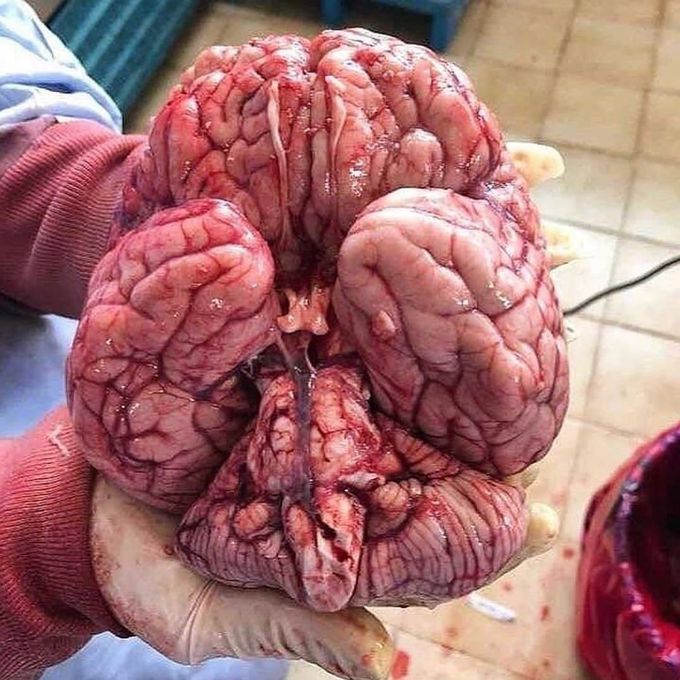


The base of the brain is a masterpiece on its own!🧠
– This unique photo shows the inferior surface of the brain, primarily the brainstem, upper portion of the spinal cord, circle of Willis, and both right and left hemispheres. If you recall from anatomy classes, The brain is composed of 3 main structural divisions: the cerebrum, the brainstem, and the cerebellum. At the base of the brain is the brainstem, which extends from the upper cervical spinal cord to the diencephalon of the cerebrum. The brainstem is divided into the medulla, pons, and midbrain and posterior to the brainstem lies the cerebellum. The midbrain — the uppermost part — has fibers that connect the brain stem to the cerebrum and cerebellum; this area is very important in the control of skeletal movements. The pons, which lies between the midbrain and medulla oblongata, relays sensory information between the cerebrum and cerebellum. The medulla oblongata contains centers for the control of breathing and cardiovascular function. The cerebellum on the other hand regulates muscle tone, coordinates movement and helps maintain posture and balance. It does not initiate movements, but is responsible for their smooth and balanced execution, for maintaining muscle tension and making movements work together in complex action such as walking. It comprises approximately 10 percent of the brain’s volume, contains at least half its neurons and is connected to the brain stem via three major bundles of input and output fibers called peduncles. Art and creation at its finest.

